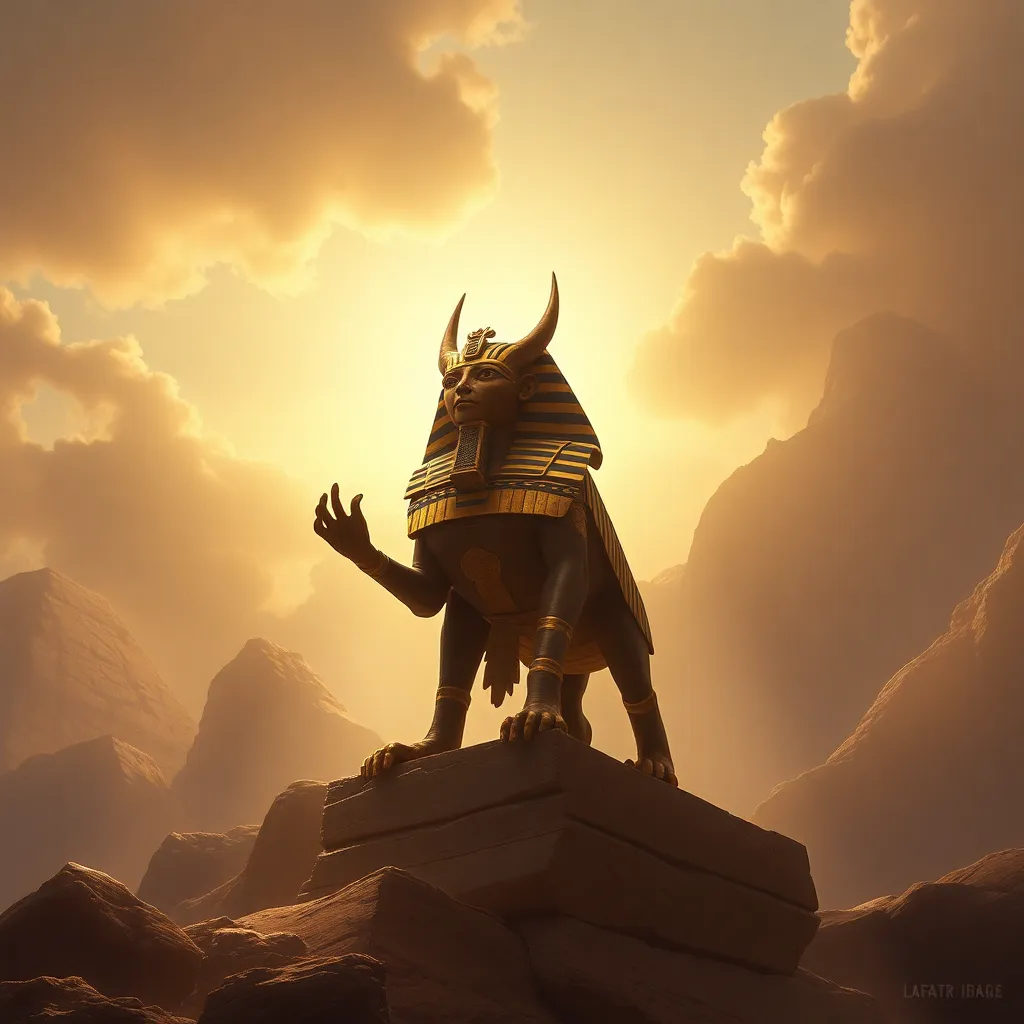Ammit: The Role of Fear in Egyptian Mythology
I. Introduction
Ammit, often referred to as the “Devourer of Souls,” is a significant figure in ancient Egyptian mythology. She embodies the fear of divine judgment and the consequences of a life lived poorly. Fear played a crucial role in ancient Egyptian beliefs, serving as both a motivator for moral behavior and a symbol of the unknown that lies beyond death. This article aims to explore the multifaceted role of Ammit in Egyptian mythology, particularly focusing on how fear shaped ancient Egyptian societal norms and their understanding of the afterlife.
II. Ammit: The Devourer of Souls
Ammit is depicted as a fearsome creature, part lion, part hippopotamus, and part crocodile. This unique combination of animals makes her one of the most terrifying beings in Egyptian mythology. She is often illustrated lying in wait for the souls of the unworthy, ready to consume them in a gruesome fate.
Her primary role is in the judgment of the dead, where she plays a pivotal part in determining the fate of souls after death. Ammit waits beside the scales during the weighing of the heart ceremony, prepared to devour those whose hearts outweigh the feather of Ma’at, the goddess of truth and justice.
Ammit symbolizes the ultimate consequence of a life of sin and wrongdoing. In the afterlife, she represents the fear of eternal annihilation, a fate worse than death itself, emphasizing the importance of living a virtuous life.
III. The Weighing of the Heart Ceremony
The weighing of the heart ceremony is a central ritual in ancient Egyptian beliefs about the afterlife. In this process, the deceased’s heart is weighed against the feather of Ma’at. The heart, considered the seat of emotion, thought, and morality, is crucial in determining whether a soul is worthy of entering the afterlife.
- The Heart: Represents the individual’s deeds and intentions during their lifetime.
- The Feather of Ma’at: Symbolizes truth, justice, and cosmic order.
If the heart is lighter or equal to the feather, the deceased is granted passage to the afterlife. However, if the heart is heavier, Ammit steps in to fulfill her role as the devourer, consuming the soul and preventing it from achieving eternal life.
Ammit’s presence in this ceremony serves as a stark reminder of the consequences of one’s actions and highlights her position as a fearsome figure within the Egyptian pantheon.
IV. The Psychological Aspect of Fear
Fear had a profound impact on ancient Egyptian behavior and moral standards. The belief in Ammit and the possibility of her devouring one’s soul instilled a sense of dread that influenced ethical living.
- Influence on Behavior: The fear of facing Ammit drove individuals to adhere to societal norms and moral codes.
- Maintaining Societal Order: The concept of divine punishment through Ammit helped maintain social order and deterred wrongdoing.
- Motivation for Ethical Living: The desire to avoid Ammit’s fate encouraged people to live honorable lives, fostering a sense of community and responsibility.
In this way, fear became a tool for regulating behavior, shaping the moral framework of ancient Egyptian society.
V. Ammit’s Representation in Art and Literature
Ammit has been depicted in various forms of ancient Egyptian art, often illustrating her terrifying visage. Artists used her image to convey both the fear of divine retribution and the seriousness of moral choices.
- Artistic Depictions: Ammit is frequently shown in tomb paintings and funerary texts, emphasizing her role in the afterlife.
- Mythological Texts: References to Ammit can be found in the “Book of the Dead,” a collection of spells and illustrations designed to guide the deceased through the afterlife.
- Cultural Interpretations: Over time, Ammit’s imagery has been interpreted in various ways, reflecting the evolving understanding of fear and morality in Egyptian culture.
VI. Fear and the Afterlife: A Dual Perspective
In ancient Egyptian mythology, fear embodied a dual nature, serving as both punishment and protection. The fear of Ammit’s judgment contrasted sharply with the hope for eternal life, creating a complex relationship between the two.
- Punishment vs. Protection: While Ammit represents the ultimate punishment for the unworthy, she also acts as a protector of cosmic order, ensuring that only those who deserve to enter the afterlife do so.
- Balance of Fear and Hope: The fear of Ammit’s devouring ensures that individuals strive for righteousness, while the hope of eternal life inspires them to seek favor in the eyes of the gods.
- Comparisons with Other Mythologies: Many mythologies explore the themes of fear and the afterlife, providing insights into how different cultures grapple with similar existential questions.
VII. Modern Interpretations of Ammit and Fear
In contemporary culture, Ammit continues to influence various forms of media, symbolizing the fears and anxieties that persist in modern society. From literature to film, her character serves as a reminder of the consequences of our actions.
- Influence in Contemporary Culture: Ammit’s image has appeared in movies, television shows, and video games, often reinterpreted to reflect modern fears.
- Relevance of Fear: The concept of fear remains relevant today, as it continues to shape human behavior and societal norms.
- Lessons from Ammit: Understanding Ammit’s role in Egyptian mythology offers valuable lessons about morality and the consequences of our choices.
VIII. Conclusion
In summary, Ammit serves as a powerful symbol of fear in Egyptian mythology, representing the consequences of moral failure and the importance of ethical living. Her lasting impact on ancient beliefs highlights the complexity of human emotions and the role of fear in shaping societal norms.
As we reflect on Ammit’s significance, we gain insights into the ancient Egyptians’ understanding of life, death, and the afterlife. These insights remain relevant today, reminding us of the timeless nature of human fears and the moral dilemmas we continue to face.




